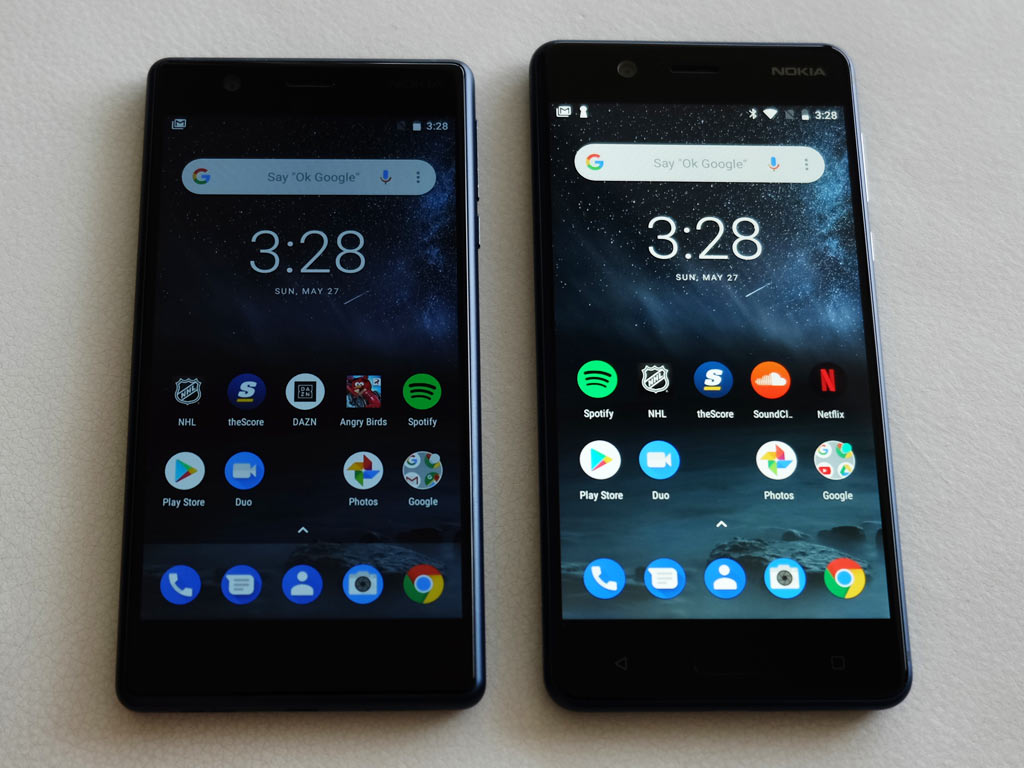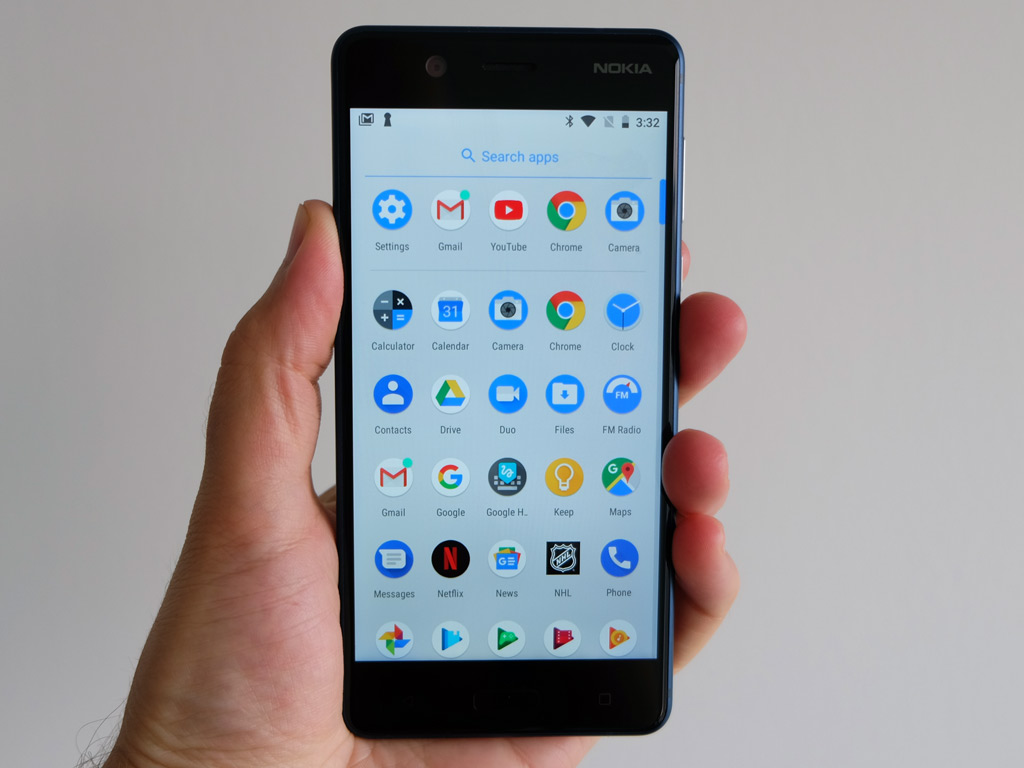
Once a pioneer in the wireless industry, Nokia has come out of hiding in Canada with these two mid-range smartphones aimed at those who don’t need it all.
It’s been a while since Nokia really made any sort of an impact in the wireless space. With Windows Phone now a memory, it’s all about Android now for the brand. It makes me wonder what might have been had Nokia gone all in on Android several years ago, but consider this a soft start. Rather than try to bring out a sophisticated flagship, the company has gone with two serviceable models instead.
Nokia design
The most obvious standout to me was the construction of both phones. Mid-range, they may be, but an all-metal body and sensible design cues make both phones feel premium. Granted, I’m not talking flagship territory here, but there was nothing that felt cheap to me on the outside.
Nokia 5Display: 5.2-inch 1280 x 720 IPS LCD display with 282 pixels per inch |
Using micro-USB for the charging port was an interesting choice, given USB-C has fast become the standard. Fewer and fewer handsets sport it these days, but Nokia opted for it in any case. Both devices are very similar in their respective builds beyond that. Button placement, speaker location and headphone jack are almost identical.
One difference is in the rear where the Nokia 5 has a more obvious camera layout. No dual lens, or anything that drastic, mind you, but the LED flash is more powerful, with a better lens when compared to the Nokia 3.
The Nokia 5 has a 5.2-inch display, albeit at a lower resolution of 720p. If you’re not interested in viewing too much video or gaming, it won’t be too much of a problem. If you are into those things, read on to find out the caveats involved.
The Nokia 3 has a 5-inch display at the same resolution. Nokia did use the same glass for both, except it was obvious to me the 5 was more vibrant than the 3. The 5 also has a fingerprint sensor on the front, whereas the 3 doesn’t, adding a little extra usability to the former over the latter.
Internal storage is limited to 16GB, but at least a microSD card can expand on that. The Snapdragon 430 is a decent processor for phones in this range, though you do sacrifice a few things to improve overall performance. That balancing act largely defines both of these phones.

Performance and software
That Nokia chose to run an almost entirely stock version of Android is among the wisest decisions underpinning these devices. The software felt lightweight on both, and it was nice to work with such a user-friendly interface inherent in it.
The challenge is in going above and beyond the basics. These are the kinds of phones that can do standard email, social media and browsing, but struggle with the extras. Multitasking with video apps can affect how well other apps perform. Gaming—unless you’re sticking to the casual variety—is simply not going to go well.
Watching video on a 720p resolution display may be fine or may not be. The Nokia 5 has the better looking display, mind you, except it’s not going to make HD video look crisp every time.
Given the lighter processor and limited RAM, I wasn’t surprised at the lag and stuttering in navigating the interface. Just opening and closing apps showed it. Over time, it became predictable, though I could understand it because of the components inside.
I also stress the basic necessities because 16GB of internal storage is also less common in 2018. Usable space is limited to about 12-13GB, so it can fill up fast. Thankfully, microSD card slots can expand on that. You will need a card for sure if you plan to download a lot of apps and take photos and video.
I couldn’t really complain about call quality or even music streaming. Callers never highlighted any issues, and I streamed music all the time on both devices. Bluetooth and Wi-Fi signals were pretty consistent.

Camera
I’m not sure what Nokia was trying to do here, but both phones were unusually made to capture underexposed photos. While the aperture may not be as wide as other phones, it’s still more or less on par with other mid-range devices.
And yet, photos lack vibrancy. Colour reproduction was highly dependent on lighting conditions, which explained why night or low-light shots appeared so dull. Without good light to illuminate a subject, it was hard to get something good.
Nokia included a manual shooting mode, only it’s a tad misleading. Exposure and white balance are really the only two adjustable settings. You can adjust metering and manually switch to macro but without adjusting the shutter and ISO, it’s hard to gain further control of a shot. I had to rely heavily on HDR by leaving it on at all times.
Ultimately, both phones are capable of taking basic snaps, just not anything overtly impressive. If I was to go on a vacation or important event with this phone, I would want to bring another camera.
Battery life
Battery life usually benefits from less powerful components inside, though I would hesitate to suggest the trade-off here is really notable. The Nokia 5 has a 3000mAh battery that can easily go a full day. The Nokia 3 has a 2630mAh battery that almost functions and lasts the same amount of time.
In either case, it depends on what you do. Basic tasks will yield plenty of life per charge. Start streaming, playing games or talking a lot on the phone, and you notice it trickling down.
Quick Charge through the included charger and cable will get you about half the full charge in an hour. At least that can help get you back up and running in short order.
Final thoughts
Nokia built two attractive phones that look more premium than the price paid for them. The experience in using them is different than what you would get with something more expensive. That’s where major considerations come in. If you want something basic to do basic things, you should be fine. If multimedia, photography and gaming are important to you, you may be better off with something else.









